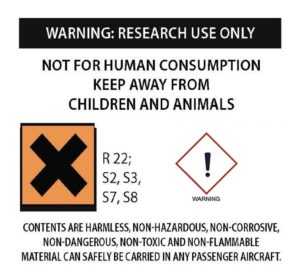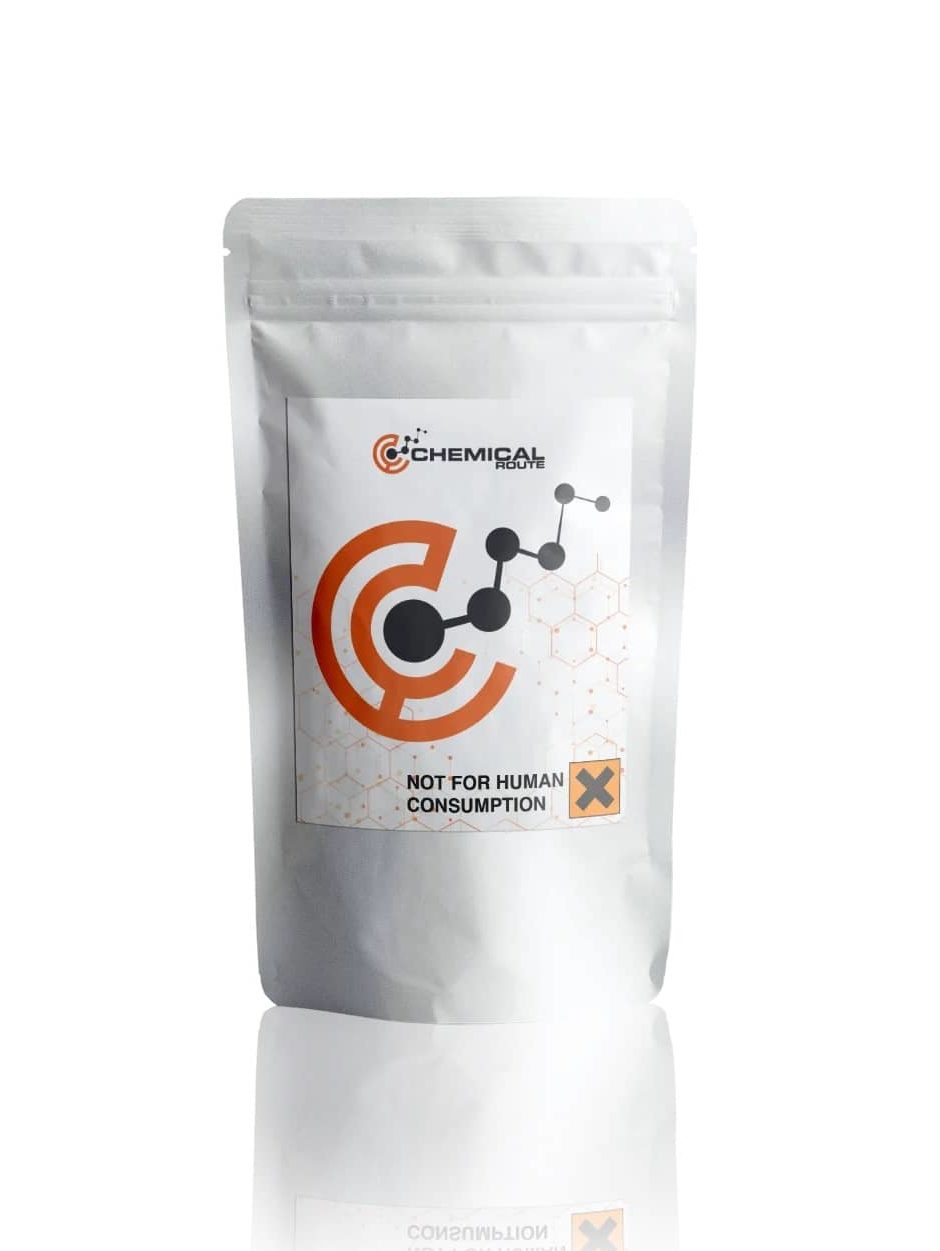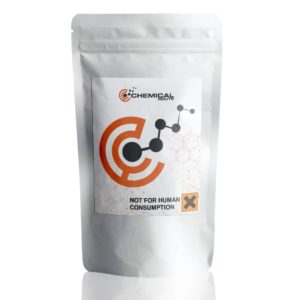Description
5-MeO-DMT, 5-methoxy DMT, 5-methoxy-N,N-Dimethyltryptamine
Product information
IUPAC-name 2-(5-Methoxy-1H-indol-3-yl)-N,N-dimethylethanamine
Synonyms 5-MeO-DMT, 5-methoxy DMT, 5-methoxy-N,N-Dimethyltryptamine, O-methyl-bufotenin
Formal name 5-
Cas number 1019-45-0
Formula C13H18N2O
Molar Mass 218.300 g·mol−1
Purity 99.0 % min.
Formulations A neat solid, Powder
Solubility
- DMF: 30 mg/ml
- DMSO: 30 mg/ml
- Ethanol: 30 mg/ml
- Ethanol:PBS(pH 7.2) (1:1): 0.5 mg/ml
5-MeO-DMT, 5-methoxy DMT, 5-methoxy-N,N-Dimethyltryptamine, O-methyl-bufotenin
A derivative of the tryptamine class, 5-meO-DMT is commonly used as a drug for multiple conditions. It can be found in various plant species, and it is also produced by the glands of a toad known as the Sonoran Desert toad. Similar to its cousins, bufotenin and DMT, this drug has been used as an enthogen in South America. Slang terms used to describe this drug include Five-methoxy, Toad venom, and The power.
It is believed that 5-meO-DMT can produce intense and powerful psychedelic states. It can be produced by binding to the serotonin receptors in the brain. Although its exact mechanism is not known, it is widely believed that this drug can trigger these effects.
It can be found in various plant species and in the toad’s venom. Although it is not known exactly how this drug came to be used in South America, it is believed that it was used in shamanic practices for centuries. In modern times, the extract of the toad’s venom and the synthetic powder form are commonly used.
The psychoactive and synthesis effects of 5-meO-DMT were detailed in a 1997 book by Alexander Shulgin. Recent studies have shown that this drug can induce mystical experiences. Because of its potential therapeutic properties, there has been a growing interest in exploring its use.
The effects of 5-meO-DMT are categorized into multiple subjective categories, such as unity and interconnectedness, ego loss, and time distortion. Although it is best compared to DMT in terms of its intensity, 5-meO-DMT tends to produce more physical and mystical-like effects. It also lacks a visual component, which makes it more likely to produce more transpersonal or psychological effects.
Aside from its physical and psychological effects, 5-meO-DMT can also cause mental side effects. These include anxiety and dysphoria. These are typically described as overwhelming and challenging.
Despite its relatively low physiological toxicity, the safety profile of 5-meO- DMT is still not known. Some reports claim that it can cause a serotonin overdose, and a small number of people have reportedly died due to this. It is also believed that this drug can interact with other drugs, such as MAOIs.
According to some users, 5-meO-DMT is only suitable for people who have previously used powerful psychedelics, such as DMT, ayahuasca, and DPT. It is also advised to use harm reduction methods if using this drug.
Chemistry
Tryptamines are a class of indole alkaloid molecules that are composed of a bicylic indiole heterocycle and a terminal amine group. The core structure of these molecules is similar to that of a tryptamine. The 5-MeO-DMT derivative is substituted for R5 of this indole heterocycle by a methoxy group known as CH3O. It also contains two methyl groups bound to the amine RN of the tryptamine.
5-MeO-DMT is a N-substituted version of the 5-MeO-DiPT and 5-MeO-MiPT. Although it has similar effects, it has a different structure.
Pharmacology
The effects of 5-Meo-DMT are believed to be due to its ability to bind to the 5-HT2A receptor. This molecule also shows high binding affinities for the other 5-HT1A and 5-HT2A subtype receptors. However, the exact mechanisms by which these interactions contribute to the psychedelic experience remains unclear.
Additional mechanisms of action that are known to be involved in the reuptake of certain neurotransmitters, such as serotonin, dopamine, and noradrenaline, are also known to be involved. This can lead to the toxic effects of 5-MeO-DMT when combined with other drugs that are known to be capable of releasing these chemicals.
The toxicological and physiological properties of this compound has not been analyzed. Usage of this Chemical should be for research and forensic purposes only.
WARNING This product is not for human or veterinary use.

This product is only available to persons of 21 years old and above.
Hazard statement(s)
| H302 | Harmful if swallowed |
| H315 | Causes skin irritation |
| H319 | Causes serious eye irritation |
| H332 | Harmful if inhaled |
| H335 | cause respiratory irritation |
| H336 | cause drowsiness or dizziness |
| Precautionary statement(s) | |
| P264 | Wash hands thoroughly after handling |
| P280 | protective gloves/protective clothing/eye protection/face protection |
| P305 + P351 + P338 | IF IN EYES: Rinse cautiously with for several minutes. Remove contact lenses, if present and easy to do. Continue rinsing. |
| P337 + P313 | If eye irritation persists: Get medical advice/attention |
| P261 | Avoid breathing dust/ fume/ gas/ mist/ vapors/ spray |
| P271 | Use only outdoors or in a well-ventilated area |
| P304 + P340 | IF INHALED: Remove victim to fresh air and keep at rest in a position comfortable for breathing |
| P312 | Call a POISON CENTER or doctor/physician if you feel unwell |
| P403 + P233 | Store in a well-ventilated place. Keep container tightly closed |
| P405 | Store locked up |
| P501 | Dispose of contents/container to a licensed disposal company |



Reviews
There are no reviews yet.